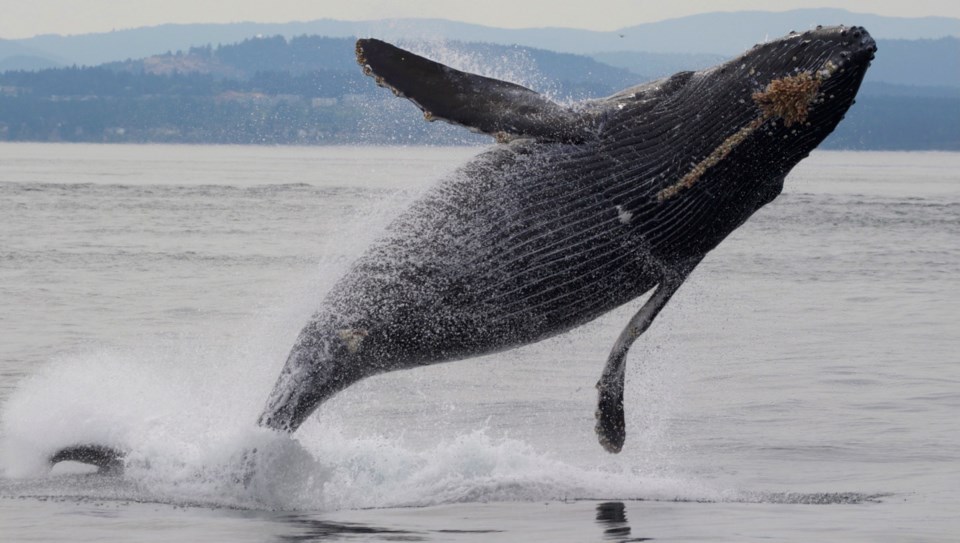The influx of whales in waters near Victoria is being hailed as a “humpback comeback,” as it represents one of the biggest upticks in cetacean activity in recent years.
Researchers, marine scientists and whale-watching guides who cover the water between Victoria and Seattle have all reported significant humpback activity as the species begins to repopulate the Salish Sea, which includes the Strait of Georgia, Juan de Fuca Strait and Puget Sound.
A spate of recent photos taken by naturalists and whale-watching guides has given researchers unprecedented access to the pods of humpbacks currently travelling south to warmer waters.
“We’ve seen more humpbacks this year than ever, and they’re popping up everywhere,” said Capt. Mark Malleson of Victoria’s Prince of Whales Whale Watching.
More curious is some unusual behaviour exhibited by humpback males: Many have been heard serenading female members of their pod — something they have been known to do only in their breeding grounds in Mexico, Hawaii and the Caribbean.
That suggests these whales intend to stay, according to Michael Harris, executive director of the Pacific Whale Watch Association.
“That’s very unusual,” said Harris, whose trade association represents 36 whale-watching operators in B.C. and Washington. “They are repopulating areas they once frequented, before commercial whaling wiped them out. That’s very clear.”
Friendly whales have been approaching whale-watching boats around Vancouver Island and Washington state. Humpbacks are even coming into the bay near downtown Seattle, Harris said.
“Clearly, the catalyst is the cessation of commercial whaling in this region, particularly off the eastern shore of Vancouver Island. They are now comfortable enough to recolonize areas that they once knew were dangerous.”
The humpback comeback has given whale-watchers in the area between the Strait of Georgia and Puget Sound — jokingly dubbed the “Humpback Highway” — more to observe than orcas.
“It’s nice to have other species of whales to watch on a regular basis,” Harris said. “We probably had equal amounts of humpback whale-watching days as we did orca days this year.”
Fin whales — the second largest animal in the world, behind blue whales — also appear to be returning to the region. A sighting over the summer was the first reported in the area since 1930.
Harris said the whale is still being spotted. “He didn’t take a wrong turn. He may be the first fin whale to usher in this recolonization of areas they frequented before commercial hunting wiped them out.”
In 1966, when commercial whale hunting was banned, the humpback whale population on the coast was down to 1,500 animals, Harris said.
The Department of Fisheries’ Cetacean Research Program estimates that the population had rebound to about 21,000 by 2006.
The new wave of whales began 10 years ago with “Big Mama,” a female humpback who forged a new path south from Alaska via inland waters. Her kind have followed in large numbers. “Somehow they got the message that this is now a safe place to travel,” Harris said.
It’s good news for whale-watching operators — companies remain open — but there is some concern about the out-of-the-ordinary behaviour, he said.
“I think any responsible conservationist would not look at something like this and celebrate it without looking at the big picture and saying, ‘Why are they here?’ ”



